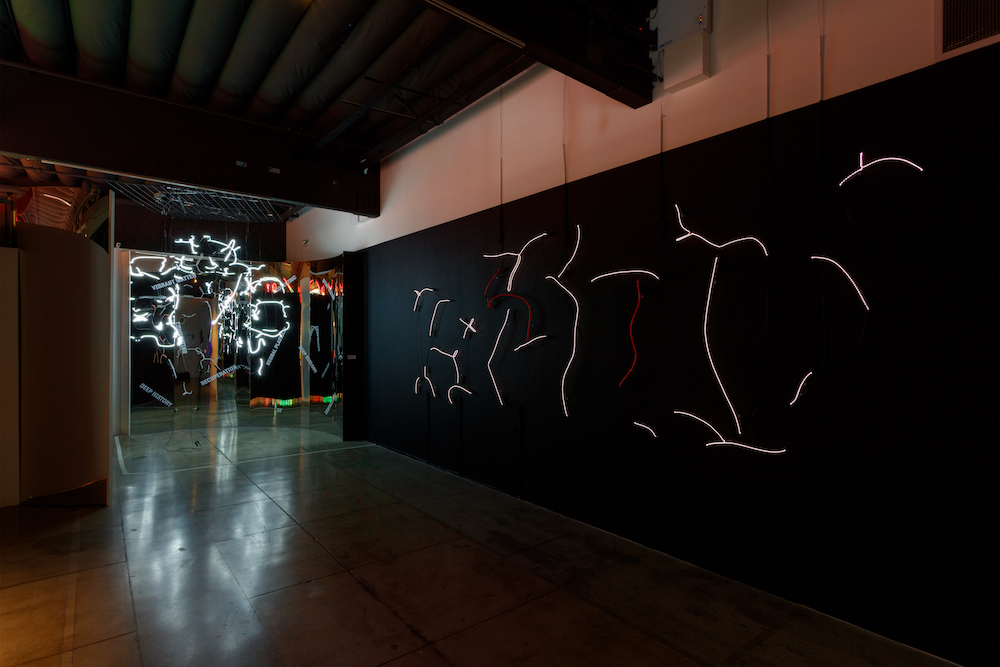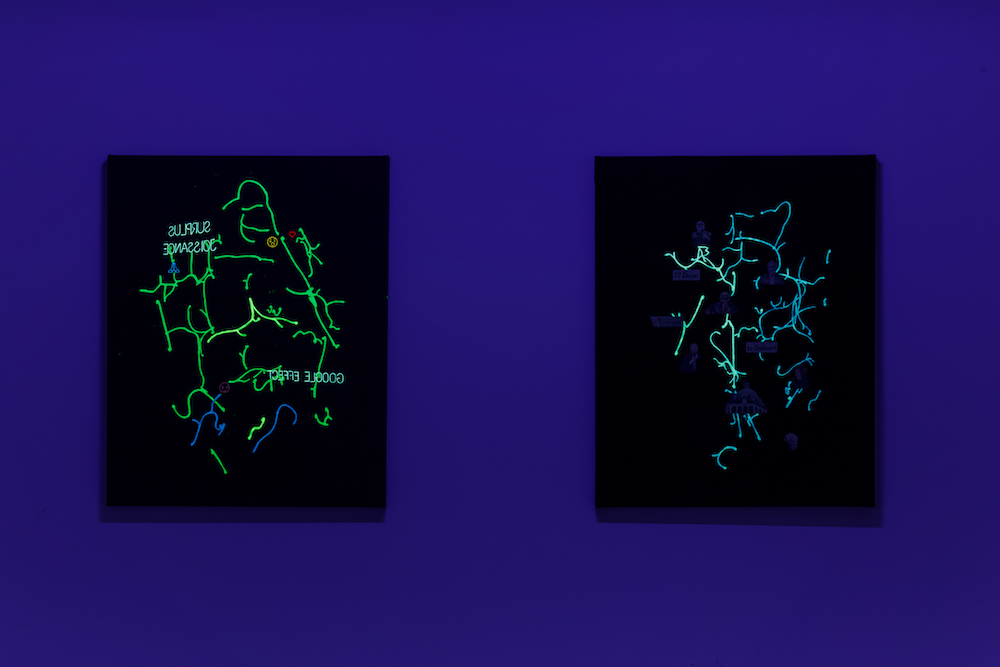The elusive relationship of the brain and the mind has always fascinated without ever quite being resolvable. It is as though we collectively hold the convoluted gray mass that constitutes the brain in suspension with respect to its relationship to the entity whose non-physical indefinability is connected, although unclearly.
The chart of line drawings on the wall function as a kind of glossary or index. They have been identified by the artist, Warren Neidich, as corresponding to the shapes mapping the folds on the outer layer of the brain. These glyphs, quasi-letters and jotted lines are used in combinations both painted and in the form of neon lights as a kind of nonliteral exploration of the mind as transcribed brain lines. The rationale for creating these installations and paintings goes far beyond their physical presence, reaching out to induce the viewer to consider philosophical and conceptual questions about the accumulation of information and use of that accumulation by capitalism. Sometimes the connection is literally beyond a viewer’s theoretic grasp, yet the experience of the exhibition is intense.
Neon light and color has always existed in darkness. The way it pierces the dark with its deeply saturated colors is shocking yet physically engaging. Neon is normally viewed in animated progression, and the installations in the exhibitions avail themselves of lights flickering both on and off, and multiple reflections of those lights in mirrored surfaces, as well as light moving inside the glass tubing to ensnare the viewer’s attention.

Warren Neidich, “The Brain Without Organs: Aporia of Care,” detail, 2022. Image courtesy of the Museum of Neon Art. .
The hanging sculpture Brain Without Organs (all works undated) is comprised of white neon tubing that mimics the folds on the outer layer of the brain. These sulci, grooves and gyri flicker, illuminated in a space containing stenciled words and reflective walls. The words are neologisms that range from relatively comprehensible to less decipherable. It is through this language that the artist brings the viewer into contact with the larger picture which has been dubbed by the artist, neuroaesthetics. This approach works with the acceleration of information technology that is pumped into our mind through our eyes, and the artist wants us to consider how that effects the brain development.
The connection between these brightly lit works and these much broader themes is particularly evident in one work; it is in a smaller gallery and illuminated by black light. The fluorescent paintings that are activated in the space are illustrations of the brain, or studies for the installation. Just inside the entrance, one of the works shows fragments cut from newspapers and collaged alongside the glowing patches of paint. Political figures and writing about politics are contrasted by the quality of the patches laid out almost like a swatch sampler. It is the most overt attempt in the exhibition to directly correlate the physicality of the brain and thoughts that include politics. It is also prophetic, the link is readily apparent but defies interpretation.


